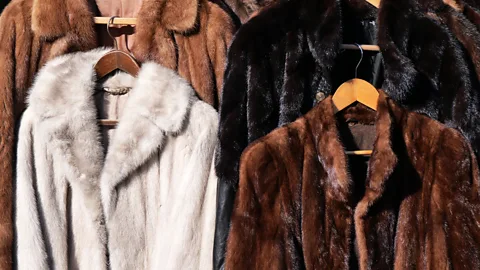 Getty Images
Getty ImagesIt’s having a moment with celebrities, fashionistas and Gen Z. But wearing any kind of fur, from vintage to synthetic, poses some difficult questions. Could a new plant-based faux fur be the way forward?
From Tory Burch in New York and Simone Rocha in London, to Fendi in Milan and Miu Miu in Paris, fur dominated the autumn/winter 2025-26 catwalks. And celebrities matched the runways, with Hailey Bieber, Kendall and Kylie Jenner, Taylor Swift and Rihanna all spending the start of the year wrapped up in faux and vintage fur coats.
The last time fur hit the headlines was in 2017, when Gucci pledged to go fur-free, influencing a host of designer brands to follow suit. The move was welcomed by animal rights campaigners, but what followed was the scaling of a new problem: much of the real fur has been replaced by synthetic alternatives that are derived from fossil fuels. Given the tensions around animal welfare and the environment, why is fur now firmly back in fashion?
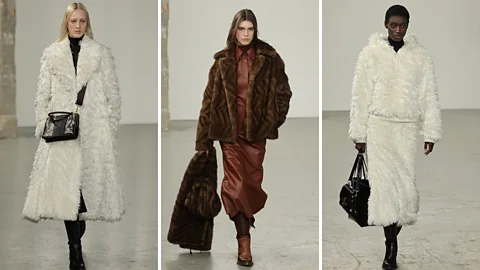 Getty Images
Getty ImagesIt began in early 2024 with the arrival of the mob wife aesthetic, an ostentatious, glamorous response to the understated, minimalist trend that preceded it: stealth wealth. “Reviving historical looks for contemporary wear is a natural part of the fashion cycle. It’s escapism, and who doesn’t want some of that?” says Natascha Radclyffe-Thomas, associate professor, MBA fashion business and entrepreneurship, at Ravensbourne University, London. “I was in the room when [former CEO] Marco Bizzarri announced Gucci would no longer use animal fur in its collections, and remember what an amazing shift this was for an Italian luxury brand where fur was such a prevalent material. But the topic of faux fur is such a tricky one, too.”
Radclyffe-Thomas adds that, since designer labels’ decision to ban real fur from their collections, the faux-fur market has evolved from the early days of “fun” fur – low cost, often in bright colours that didn’t attempt to imitate the real thing – to a new level of quality where most consumers wouldn’t know the difference between real and fake.
The production of fossil fuel-based fabrics continues to rise globally, with polyester the most common, accounting for 57% of all fibre production. Even clothing made from recycled polyester is problematic because the model isn’t circular. The vast majority is made using plastic bottles – not old textiles – which means that it can’t be recycled again, and will most likely end up in landfill at some point.
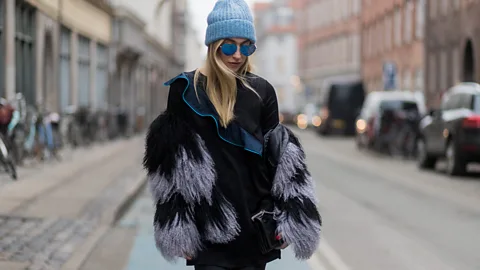 Getty Images
Getty ImagesOne way to keep faux fur out of landfill – or delay its final destination – is to keep it in circulation. At fashion rental company By Rotation, the rental of faux fur and wool coats has been increasing since even before the recent catwalk shows. London label Charlotte Simone – whose faux fur coats have been worn by Taylor Swift, Dua Lipa and Madonna – is the third most rented brand across coats and jackets. “Higher quality, well-made faux fur, especially from designer brands, tends to last longer, meaning it’s more likely to be passed down, resold or rented rather than discarded,” By Rotation founder and CEO, Eshita Kabra-Davies, tells the BBC.
Changing tastes
Holly Watkins, owner of vintage boutique One Scoop Store in north London, says that in the past few years she has seen a considerable shift away from selling real fur to fake alternatives, in response to changing tastes and demands from her customers. “I only sell real fur if it’s a super-special vintage piece which I can’t say no to, or has a detachable collar or trim,” she tells the BBC. “Personally, I don’t have a problem with old [real] fur – it’s better to prolong its life than send it to landfill. I have more of a problem with polyester, in that it will never biodegrade.”
But from conversations with vintage dealers in west London – home to the likes of Portobello market – Watkins says that many stores have never stopped selling real fur, both old and new, with younger shoppers helping to drive the trend.
“Fashion turned on fur. Young customers want more” was the headline of a recent Wall Street Journal article – and the consensus does seem to be that Gen Z is leading the revival of vintage fur. Madison Avenue Furs, the largest buyer of pre-owned fur in the US, reports a significant uplift in sales, particularly of pre-owned pieces. “We saw college students coming in to buy fur, which we haven’t seen in years,” Larry Cowit, owner of Madison Avenue Furs, tells the BBC. “The vintage furs against the new furs was a concern for many of the younger buyers and – ethically – they were comfortable with vintage.”
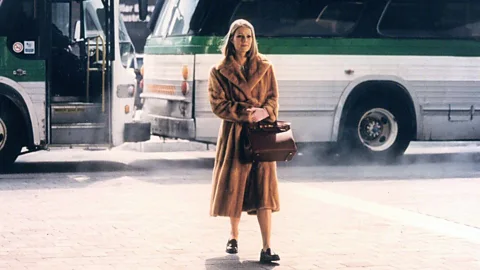 Alamy
AlamyCustomers are buying vintage furs across the board, says Cowit, including mink, fox and beaver in oversized silhouettes – from the likes of Christian Dior, Fendi, Oscar de la Renta, Prada and YSL. “Once these brands come in, they go rather quickly.”
On the catwalks at the recent fashion weeks, much of the fur was faux, although among the headlines at Paris Fashion Week was a mink coat made from real vintage fur at Gabriela Hearst, a designer label that positions itself as “luxury with a conscience”.
Animal rights campaigners don’t accept the vintage argument. “Regardless of when the damage was done, vintage fur remains clothing made from the skin of a needlessly killed and caged animal,” says Emma Håkansson, founder of Collective Fashion Justice. “It is an ongoing symbol of human supremacy over other animals, and we should not accept that in the 21st Century when we have myriad other options without animal exploitation, wildlife killing or factory farming.”
Among the new-generation alternatives to fossil-fuel-made fur and real animal skin is Savian, a 100% plant-based fur made from nettle, flax and hemp sourced from Europe and produced in Italy. Developed by material science company BioFluff, Savian launched in the form of a longline coat by Stella McCartney during COP28 in November 2023, and was later used in 2024 by Danish fashion brand Ganni to create a collection of bags for Copenhagen Fashion Week.
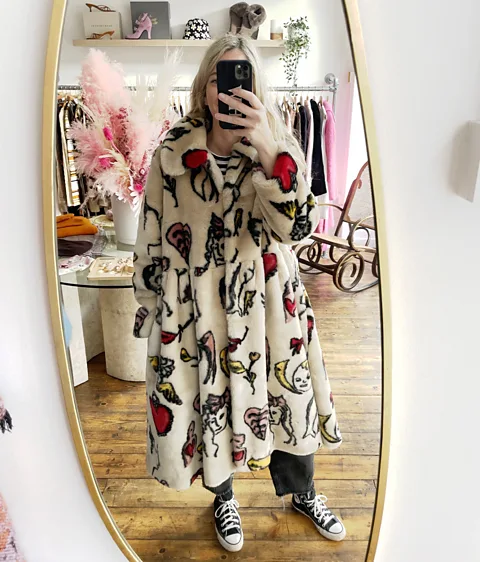 One Scoop Store
One Scoop Store“We are working with several fashion brands across the luxury, contemporary and accessible markets to develop materials that are suited to their needs,” BioFluff co-founder Roni Gamzon tells the BBC, adding that cost remains a challenge to scaling up the adoption of new-gen materials. “So many brands have built a reliance on low-cost synthetic materials manufactured at mass in the Far East, making it impossible for us to compete purely on pricing.”
BioFluff is part of La Maison des Startups, a programme from LVMH to help accelerate the implementation of new solutions within its portfolio of brands, which includes Louis Vuitton, Christian Dior, Fendi and Céline. Conversely, LVMH also helps to fund The International Fur Federation, paying €300,000 ($318,000) for Furmark membership, a global certification and traceability system for real fur.
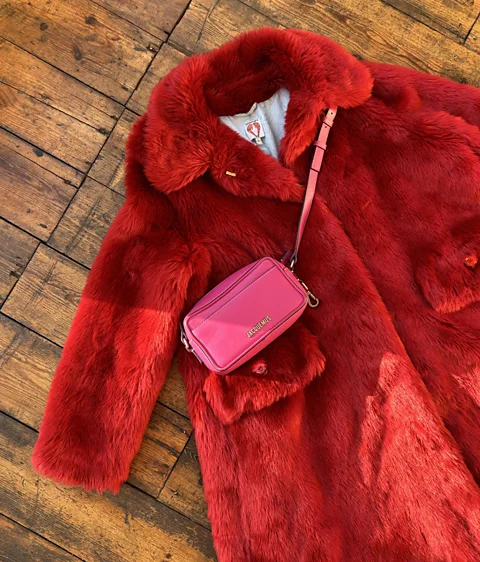 One Scoop Store
One Scoop StoreCowit, who continues to sell both new and vintage furs, believes it’s up to customers to make the choice, while Radclyffe-Thomas says her anti-real-fur views were challenged when she worked in the US and met people for whom hunting and trapping were part of their traditions.
“For many Indigenous cultures, fur and animal skins are part of a cultural heritage used for ceremonial and everyday dress, and I do think that there is an argument for respecting this,” she says, before recalling her early student days where she learnt sewing techniques from a furrier. “Those classes brought home to me the reality of the number of animals killed for clothing, and pretty much cemented my personal view: I have never considered buying real fur.”
Three Things to Help Heal the Planet by Ana Santi is published by Welbeck Balance.


